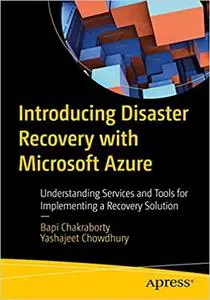Bapi Chakraborty, "Introducing Disaster Recovery with Microsoft Azure: Understanding Services and Tools for Implementing a Recovery Solution"
English | ISBN: 1484259165 | 2020 | 333 pages | EPUB, PDF | 12 MB + 7 MB
English | ISBN: 1484259165 | 2020 | 333 pages | EPUB, PDF | 12 MB + 7 MB
Explore and learn the key building blocks of Microsoft Azure services and tools for implementing a disaster-recovery solution of any on-premises or cloud-based application. In this book, you will go through various aspects of planning, designing, and configuring a robust recovery solution on Azure.
Introducing Disaster Recovery with Microsoft Azure starts by explaining the disaster-recovery landscape and how Azure disaster recovery is different from the traditional approach. You will learn how to leverage Azure site recovery and various Azure-based services to design and implement a recovery solution and much more. Moving forward, you will design and implement various scenarios such as on-premises to Azure, Azure to Azure, and on-premises to on-premises disaster recovery. You will also learn common considerations and technicalities of implementing recovery solutions for various multi-tier, monolithic, and modern micro-services enterprise applications. Finally, you will go through real-life examples, scenarios, and exercises.
After reading this book, you will be able to design and implement disaster recovery on Azure in different scenarios. You will also look at a few real-world scenarios that will provide more practical insights.
What You Will Learn
Discover the fundamental building blocks of disaster recovery on Azure
Examine various application-specific considerations for disaster recovery
Leverage various PaaS capabilities to achieve maximum benefit
Design and implement a multi-regional Azure to Azure disaster recovery plan
Who This Book Is For
Consultants, architects, and Azure administrators.



